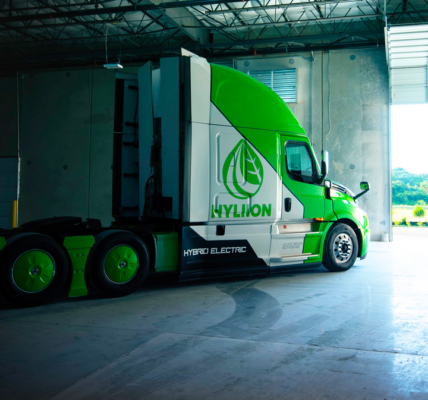Ford Motor plans to invest $29 billion in electric and autonomous vehicles through 2025, the company announced when it reported better-than-expected fourth-quarter earnings.
Wall Street was waiting to see Ford pour more money into the emerging technologies after General Motors announced plans last year to increase spending on all-electric and autonomous vehicles to $27 billion between 2020 and 2025.
Ford said its plans include $7 billion in self-driving vehicles and $22 billion in electrified vehicles, up from $11.5 billion through 2022. But not all the announced cash in EVs is new. The company is including previous investments of roughly $7 billion since 2016, bringing Ford’s new investment commitment to $10.5 billion through 2025.
Ford said a majority of vehicles under the plan will be all-electric, but the company also has hybrid and plug-in hybrid models that continue to have traditional internal combustion engines.
“The transformation of Ford is happening and so is our leadership of the EV revolution and development of autonomous driving,” Ford CEO Jim Farley said in a release.
For 2021, CFO John Lawler said the company estimates it will earn between $8 billion and $9 billion in adjusted pretax profits and generate between $3.5 billion and $4.5 billion in adjusted free cash flow. That doesn’t factor in a global shortage in semiconductor chips that he said could lower Ford’s earnings by $1 billion to $2.5 billion this year.
“The semiconductor situation is changing constantly, so it’s premature to try to size what
availability will mean for our full-year performance,” he said in a press release. “Right now, estimates from suppliers could suggest losing 10% to 20% of our planned first-quarter production.”
Ford earlier Thursday said it was significantly cutting production at plants next week in Michigan and Missouri that produce its profitable F-150 pickup trucks due to a global semiconductor chip shortage.
Automakers and parts suppliers began warning of a semiconductor shortage late last year after demand for vehicles rebounded stronger than expected following a two-month shutdown of production plants due to the coronavirus pandemic.
Fourth-quarter earnings: On an unadjusted basis, Ford’s loss widened to $2.79 billion, or a loss of 70 cents a share, during the fourth quarter from a loss of $1.67 billion, or a loss of 42 cents a share, during the same three months of 2019.
Ford excluded more than $5 billion in special charges from its adjusted earnings for the quarter. They included $2.4 billion to end manufacturing in Brazil as part of a restructuring of its South American operations and $610 million to recall 3 million older vehicles due to potential issues with their airbag inflators. Other charges involved pension obligations and other restructuring actions.
Ford’s results in the fourth quarter were led by its operations in North America, which made $1.1 billion on revenue of $22 billion. All other segments aside from Europe, with earnings of $414 million, lost money for the automaker. That included a $105 million loss in South America and $66 million loss in China.
For 2020, Ford lost $1.28 billion as it dealt with its global restructuring and impacts from the coronavirus pandemic. That compares with an $84 million profit in 2019. Its revenue for the last year was $127.1 billion, down 18% from 2019.







